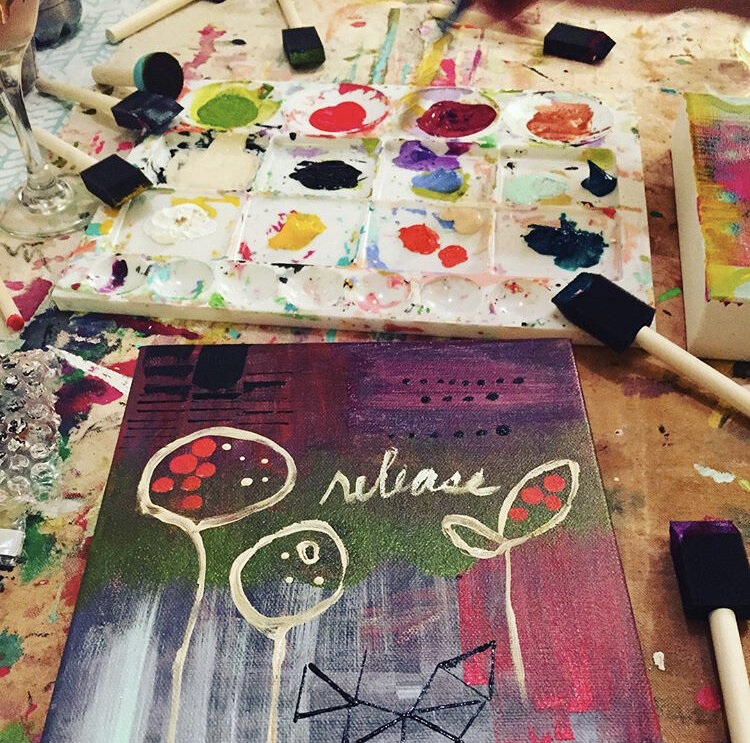What exactly is Expressive Arts Therapy?
Expressive Arts Therapy refers to the therapeutic use of visual art, storytelling, dance, music, drama, and writing to foster growth, self-expression, self-esteem, emotional regulation, and healing. During an expressive arts therapy session, two or more of these modalities is used in sequence, with each art form influencing the others. Talking about our stories and making sense of our lives using words is an important part of therapy, but allowing ourselves to explore nonverbal means of self-expression taps into something much deeper, surprisingly powerful, and almost primitive, that lives within us. People often find the somatic release that occurs when engaging in movement, song, creative writing, and the creation of visual art to reveal layers of emotion that may have been deeply buried. The creative process has numerous emotional and physical benefits, including reducing the body’s stress response, helping with focus, boosting the immune system, nurturing emotional connection and growth, fostering deeper self-knowledge, raising self-esteem, and regulating the nervous system. The emerging field of Neuroarts studies how engaging in the arts as well as having aesthetic experiences changes the brain, body, and behavior in a positive way and confirms using scientific studies what human beings have instinctually known for centuries—that art heals.
It is important to stress that, when using the arts for self-healing or therapeutic purposes, it is the process, not the product, that matters. During expressive arts therapy sessions, we use the arts to express, release, inform, integrate, enlighten and heal, rather than to create an aesthetically pleasing final piece (although the results are often quite beautiful!) Absolutely anyone can utilize the expressive arts, regardless of whether or not they consider themselves to be artistic. I have found this type of work to be particularly powerful for people of varying physical and intellectual abilities, as it provides a safe, nonjudgmental outlet for self-expression and can be adapted in any number of ways. I have witnessed many powerful moments with clients who were nonverbal and given the chance to “speak” using the creative process. There are ways to adapt this work to fit anyone’s unique intellectual and physical abilities.
While completing psychotherapist and founder of Person-Centered Expressive Arts Therapy, the late Dr. Natalie Rogers’, certification program, I found that I resonated deeply with her description of the Humanistic Principles of Person-Centered Expressive Arts, and base my practice on them. They draw from the theoretical orientation of her father, psychologist Carl Rogers, and are as follows:
All people have an innate ability to be creative.
The creative process is healing. The expressive product supplies important messages to the individual. However, it is the process of creation that is profoundly transformative.
Personal growth and higher states of consciousness are achieved through self-awareness, self-understanding, and insight.
Self-awareness, understanding, and insight are achieved by delving into our emotions. The feelings of grief, anger, pain, fear, joy, and ecstasy are the tunnel through which we must pass to get to the other side: to self-awareness, understanding, and wholeness.
Our feelings and emotions are an energy source. That energy can be channeled into the expressive arts to be released and transformed.
The expressive arts—including movement, art, writing, sound, music, meditation, and imagery—lead us into the unconscious. This often allows us to express previously unknown facets of ourselves, thus bringing to light new information and awareness.
Art modes interrelate in what I call the creative connection. When we move, it affects how we write or paint. When we write or paint, it affects how we feel and think. During the creative connection process, one art form stimulates and nurtures the other, bringing us to an inner core or essence which is our life energy.
A connection exists between our life-force—our inner core, or soul—and the essence of all beings.
Therefore, as we journey inward to discover our essence or wholeness, we discover our relatedness to the outer world. The inner and outer become one.
“Our creativity is directly connected to our internal energy source and our willingness to face the unknown. Being in the space of silence, where everything and nothing exists, we cultivate the garden out of which creativity blooms. ”





